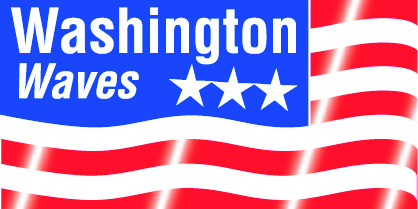Washington, D.C.—Key lawmakers announced a final agreement on a much-anticipated Water Resources Development Act (WRDA) of 2024 that authorizes the U.S. Army Corps of Engineers civil works program to improve ports, inland waterways navigation and flood protection. A product of months-long negotiations, the biennial bill includes 21 new projects or modifications to existing projects and more than 200 feasibility studies.
“WRDA regularly delivers critical water resources infrastructure improvements for communities across America,” said Rep. Sam Graves (R-Mo.), chairman of the House Transportation and Infrastructure Committee. “WRDA also makes policy and programmatic reforms to streamline Corps processes, reduce cumbersome red tape and get projects done faster.”
Sen. Shelley Moore Capito (R-W.Va.), ranking member of the Senate Environment and Public Works Committee, noted the bill also reauthorizes the Economic Development Administration’s programs for the first time since 2004.
Other “wins” singled out by the lawmakers include an increase to 75 percent of the federal cost-share for inland waterway projects, with the remaining 25 percent coming from the Inland Waterways Trust Fund, and reforms for the implementation of water resources development laws requiring the Corps to submit plans to Congress.
The American Association of Port Authorities (AAPA) expressed support for the negotiated version of the bill.
“Moving the people, energy and goods of a vibrant economy would not be possible without regular passage of the Water Resources Development Act,” AAPA President and CEO Cary Davis said. “In particular, we commend the committees for including much-needed harbor deepening provisions to accommodate the growing size of ships, and we encourage Congress to pass this bill without delay to maintain the flow of commerce in our federal navigation channels.”
MarAd Grants
The Maritime Administration (MarAd) awarded grants totaling $4.85 million to five marine highway projects across the nation to enhance the movement of goods along navigable waterways while expanding existing waterborne freight services in Louisiana, Puerto Rico, Washington and West Virginia.
“The Biden-Harris administration’s investments in the United States Marine Highway Program are to move goods more quickly and efficiently, which is especially important considering the current record demand for shipping,” transportation secretary Pete Buttigieg said.
With this funding, Buttigieg said, operations at ports and waterways will be modernized further and supply chains strengthened.
MarAd said the program also aims to expand the use of the nation’s navigable waterways to relieve landside congestion, support new and more efficient transportation options and enhance performance of the surface transportation system. Projects selected for the funding include the Central Louisiana Regional Port, Alexandria, La., $2,524,977; the Puerto Rico Integrated Transportation Authority, Vieques, Puerto Rico, $711,491; Osprey Logistics LLC, Everett, Wash., $881,330; Tidewater Barge Line Inc., Vancouver, Wash., $454,436; and Empire Diversified Industries, Follansbee, W. Va., $277,766.
New USACE Forms
The U.S. Army Corps of Engineers announced the availability of new engineer (ENG) forms for use in the delivery of its regulatory program.
“These new and updated forms are designed to efficiently and effectively collect information needed to implement our regulatory program,” the Corps stated.
Practitioners and the public can access the forms at https://www.usace.army.mil/Missions/Civil-Works/Regulatory-Program-and-Permits/Regulatory-Program-Forms or from the Corps’ publications engineer forms website at https://www.publications.usace.army.mil/usace-publications/engineer-forms.
The Corps also noted that most regulatory requests, such as those for permit actions and for jurisdictional determinations, can now be completed online through its Regulatory Request System (RRS), available at rrs.usace.army.mil.
REC Rule
The Coast Guard will now permit mariners to use programmable calculators with memory capability when testing at a regional examination center (REC) if the calculators’ programs and memories can be cleared, the National Maritime Center (NMC) has announced.
“Mariners must bring the original or a reproduction of the manufacturer’s instruction manual, or portion(s) thereof, which includes directions for clearing all programs and memory, and be prepared to demonstrate doing so for the examiner,” NMC stated. “If Coast Guard personnel cannot confirm all programs and memory have been cleared, the calculator will not be allowed, and a TI-30XIIS scientific calculator will be provided.”
According to the NMC, the Deck and Engine Guide for the Administration of Merchant Marine Examinations (August 2014 edition) only allows mariners to use non-programmable calculators when taking a Coast Guard-administered credentialing examination. Significant technological advancements make it difficult to find nonprogrammable calculators that have the necessary scientific functions required, particularly for deck officer examinations.
Questions, concerns or feedback should be addressed to the NMC Customer Service Center by emailing IASKNMC@uscg.mil or calling 1-888-IASKNMC (427-5662).
OSHA Dashboard
The Occupational Safety and Health Administration (OSHA) has created a dashboard that allows users to search and download data on severe injury reports.
Since January 1, 2015, OSHA stated, employers have been required to report all severe work-related injuries defined as an amputation, in-patient hospitalization or loss of an eye.
“This page provides information from those reports, including a description of the incident and the name and address of the establishment where it happened,” OSHA stated. “Injuries are coded using the Occupational Injury and Illness Classification System. These data will be updated periodically and represent incidents under federal OSHA jurisdiction only. They do not include incidents under state plan jurisdiction.”




